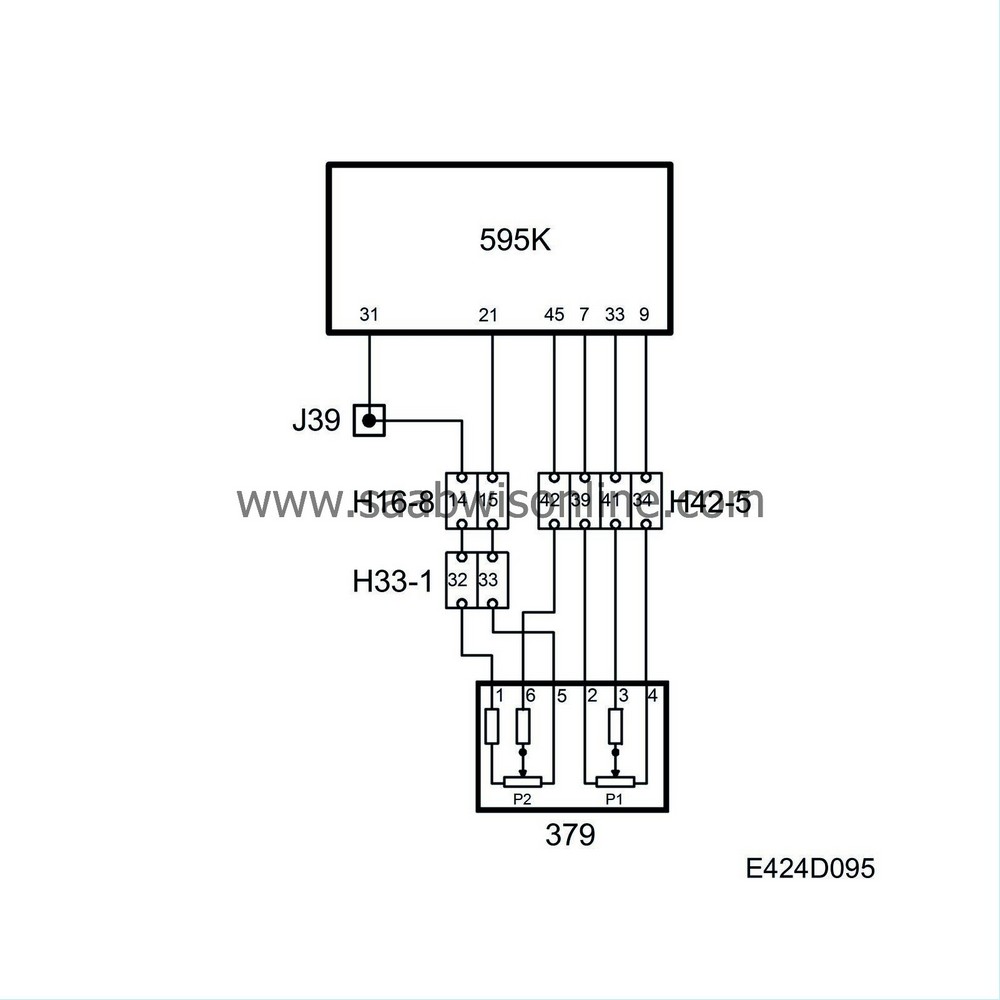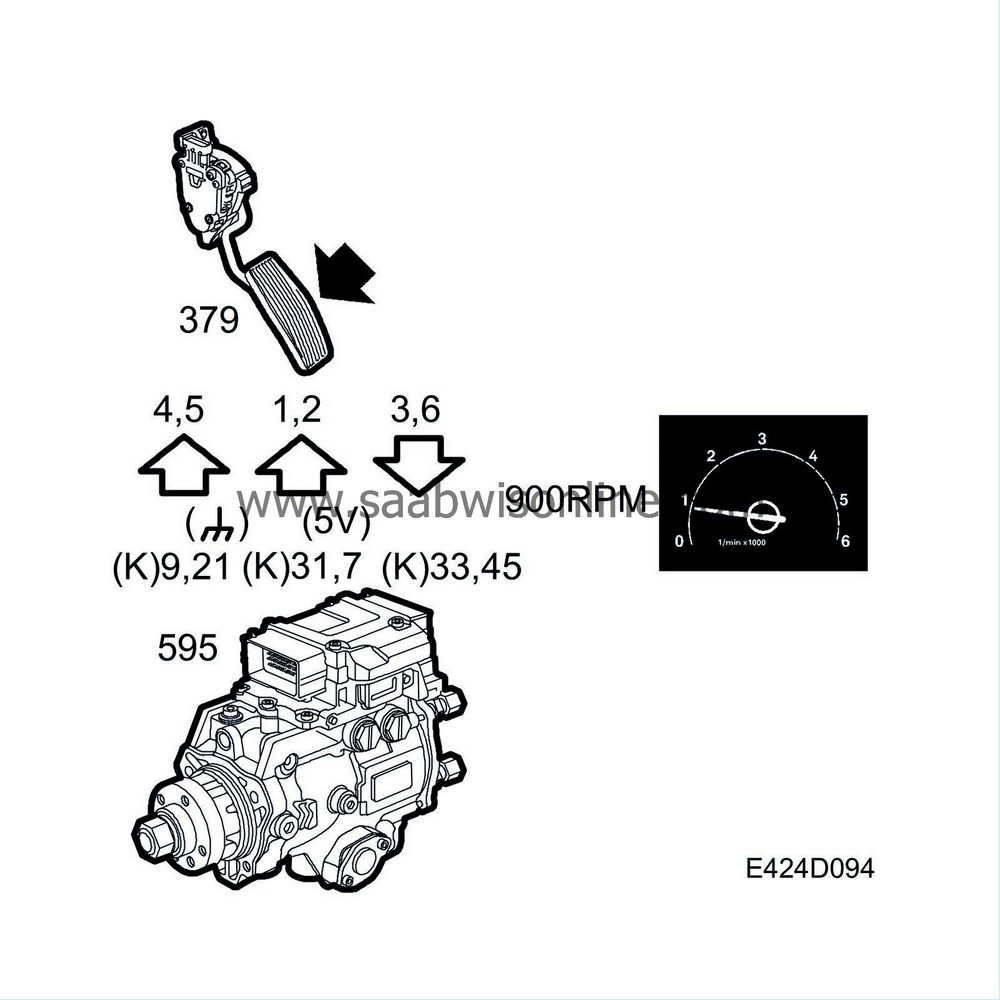Position sensor, accelerator
| Position sensor, accelerator |

The task of the position sensor is to convert the request from the driver from a pedal position to an instruction that the engine control module can understand and process. It is controlled by the accelerator via a cable that turns the shaft in the position sensor.
The position sensor contains two potentiometers that vary the voltage to the control module inputs depending on the angle of the position sensor shaft. The position sensor consists of resistor elements and sliding contacts. The sliding contacts are fitted on the position sensor shaft and move over the resistor elements in relation to the movement of the shaft.
The potentiometer is supplied with 5 V from pins 31 and 7 on the control module to pins 2 and 1 on the position sensor. The sensor is grounded from pin 5 to pin 4 on the sensor through pin 21 and pin 9 on the control module.
The control module sensor inputs, pin 45 and 33, are connected to pin 6 and pin 3 on the position sensor, where the voltage varies in relation to the angle of the sensor shaft.
To ensure that information from the position sensor is reliable, the sensor is split into two potentiometers. Both potentiometers are fed with 5 V, but the signal to the control module is always twice as large from P1 as from P2; 0-5 V and 0-2.5 V respectively. This is to assure the function and diagnosis of the position sensor. Refer to the illustration of the sensors circuitry.
When the angle of the position sensor is less than approximately 9°, the potentiometers are in idling position and the voltage on the control module inputs less than 1.1 V and 0.55 V respectively.
| Diagnostics |
| • |
If the pedal position sensor 1 is shorted to B+, DTC P0123 is generated.
|
|
| • |
If the pedal position sensor 2 is shorted to B+, DTC P0223 is generated.
|
|
| • |
If the connector is not plugged in, DTC P1122 is generated.
|
|
| • |
If there is a feasibility fault between circuit 1 and circuit 2, DTC P1271 is generated.
|
|
Irrespective of which of the potentiometers is faulty, DTCs will be generated. All pedal position faults result in a set idling speed of approximately 1400 rpm.
The pedal position sensor is changed as a complete unit.



